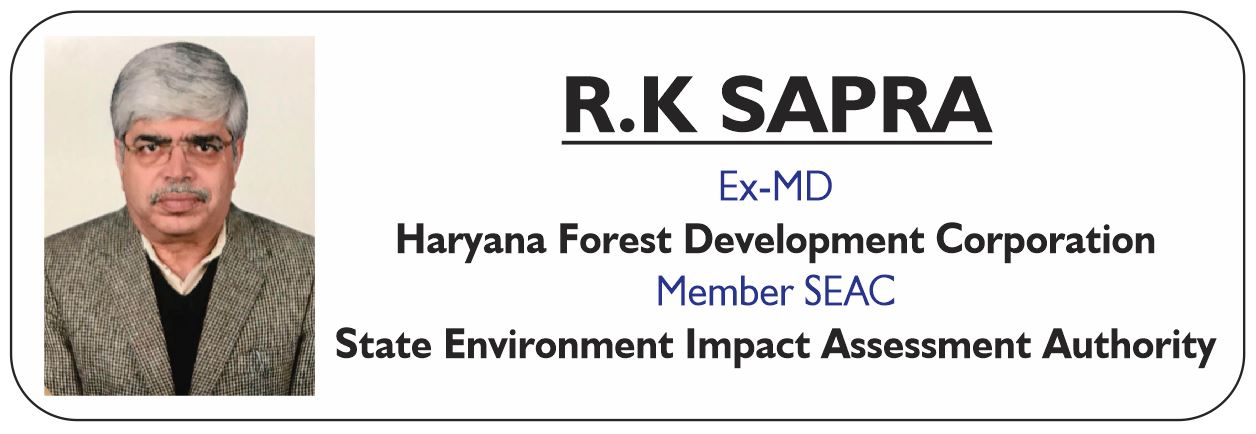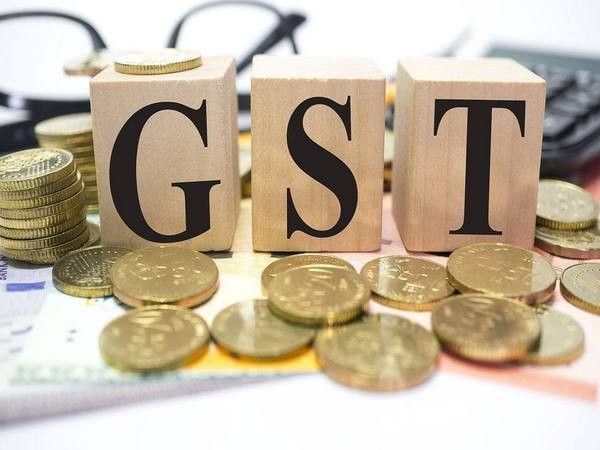
India- An Exporter of Wood and Wood Products
- जून 11, 2023
- 0
As per “India State of Forest Report (2021)”, the recorded forest areas (RFA) and the area under Trees Outside Forests (TOF) of India is 76.74 million ha and 29.38 million ha respectively, which is 23.3% and 8.9% respectively, of the geographical area. Due to the greater emphasis on conservation of the existing forests, the wood production from forests is only about three million cum presently.
As per the report “Trees Outside Forests Resources in India (2020)”, the annual timber production from TOFs including agroforestry was 85 million cum in 2020, while 15 million cum Roundwood Equivalent (RWE) of wood and wood products were imported as per the paper “Sustainable Trade of Wood and Wood based Products in India (2021)”. Hence, total availability of wood in India is about 103 million cum, out of which the contribution of forests is about 3% only. The availability of timber from forests declined over the years and the farm wood could not make up for the shortfall of timber entirely.Presently the value of import of wood and wood products is about INR 50,000 crore.
An ambitious target of making India a net exporter of wood and wood products by the year 2030 may be fixed. To achieve this target, it is suggested that a booster dose may be provided to the development of wood-based industries. Government of India has already shortlisted the Furniture Industry for its promotion and Plywood & Panel Industry may also be brought under their priority. The efficient processing of wood is not so prevalent in India as majority of units are in the small-scale sector, hence, the proportion of organized sector needs to be enhanced to improve the quality of wood products.
The wood-based industries are facing several challenges like shortage of raw material, obsolete technology, high raw material cost, lack of skilled manpower and high taxation; this needs to be tackled. To meet the raw material demands of wood-based industries, agroforestry needs to be promoted on a large scale. The agroforestry mostly depends on private investments but needs some innovative policy interventionsfrom the government which may facilitate its growth.
The time bound actions in this sector will create more income for the farmers and employment opportunities for the youth which will help in reducing the rural distress. It will also create business opportunities, earn tax revenue and foreign exchange.The following Action Plan is proposed for providing impetus to this sector.
A. Wood-based Industries
1. The licensing policy of wood-based industries which is based on farm wood may be liberalised {Ministry of Environment, Forest and Climate Change (MoEFCC)}
2. Large foreign and local industrial groups may be incentivised to manufacture quality wood products {Ministry of Commerce and Industries (MoCI)}.
3. Review export and import policy to encourage domestic production of wood products (MoCI)
4. Government of India may cover Furniture and Plywood & Panel Industries under the Production Linked Incentive (PLI) scheme to increase the export of wood products (MoCI).
5. 20% anti-dumping duty on pulp/veneer(MoCI)
6. Reduce GST on farm wood and wood products (MoCI)
7. Treating Wood based Industries at par with Food Processing Industry (MoCI)
8. A high-powered committee consisting of MoEFCC, Ministry of Agriculture and Farmer Welfare (MoAFW) and MoCI may be constituted to speed up the process of decision making in this sector (Cabinet Secretariat).
B. Trees Outside Forests (TOF) including Agroforestry.
1. Formulating National Wood Mission (MoEFCC)
2. Thecommon (10-15) tree specieswhich areplantedin farmlands throughout the country, may be excluded from the purview of timber transit rules in all the states to allow their unhindered cultivation, felling, transport and usage (MoEFCC).
3. A digital portal may be established for registration ofall farm plantations whichmay help in certification of farm wood and quantification of the carbon sequestration by tree cropsand may also provide hassle free felling and all-India transit permits for the species other than those exempted from felling and transport permission (MoEFCC)
4. Many state governments have already declared farmwood as an agricultural produce for collecting the marketing fees, hence all the incentives,concessions andfacilities like integration with electronic National Agricultural Market (eNAM), priority lending, kisan card, etc.,which are available to agricultural crops may also be extended to tree crops (MoAFW).
5. Research and Development (R&D), extension and marketing of tree crops may be undertaken by the public and private sector organisationssuch asIndian Council of Forestry Research and Education (ICFRE), Indian Council of Agricultural Research (ICAR), ITC, WIMCO, etc., in a coordinated manner (MoEFCC, MoAFW and MoCI)
A lot of recommendations regarding development of wood-based industries and agroforestry sector have been made in the past by various committees and organisations but the pace of reforms isquite slow.
It is high time thatbold initiatives and reforms are undertakenat the level of the GOIand the states. The above-mentioned interventions will help in meeting the raw material demands of the wood-based industries,livelihood needs of the peopleliving in and on the fringes of the forests,will increase the forest and tree cover while significantly contributeto mitigating the effects of climate Change.
भारत – लकड़ी और लकड़ी के उत्पादों का निर्यातक
भारत राज्य वन रिपोर्ट (2021) के अनुसार, भारत के वन क्षेत्रों (आरएफए) और वनों के बाहर के पेड़ों के क्षेत्र (टीओएफ) का कुल क्षेत्रफल क्रमशः 76.74 मिलियन हेक्टेयर और 29.38 मिलियन हेक्टेयर है, जो संचारिक क्षेत्र का क्रमशः 23.3 प्रतिशत और 8.9 प्रतिशत है। वत्र्तमान वनों को बचाए रखने को अधिक अहमियत देने की वजह से मौजूदा में वनों से लकड़ी का उत्पादन सिर्फ लगभग तीन मिलियन क्यूबिक मीटर है। “भारत में वन के बाहर पेड़ संसाधन (2020)“ रिपोर्ट के अनुसार, 2020 में टीओएफ से वनों की वार्षिक लकड़ी उत्पादन कृषि वानिकी सहित 85 मिलियन क्यूबिक मीटर था, जबकि “भारत में लकड़ी और लकड़ी के आधारित उत्पादों के सतत व्यापार (2021)“ के अनुसार, 15 मिलियन क्यूबिक मीटर गोल लकड़ी (आरडब्ल्यूई) का इक्विवेलेंट और लकड़ी के उत्पादों आयात किया गया था।
इसलिए, भारत में लकड़ी की कुल उपलब्धता लगभग 103 मिलियन क्यूबिक मीटर है, जिसमें वनों का योगदान केवल 3 प्रतिशत है। वनों से लकड़ी की उपलब्धता सालों के साथ कम हुई और खेती की लकड़ी इस कमी को पूरी तरह से पूरा नहीं कर सकी। वर्तमान में लकड़ी और लकड़ी के उत्पादों के आयात का मूल्यांकन लगभग 50,000 करोड़ रुपये है।
साल 2030 तक भारत को लकड़ी और लकड़ी के उत्पादों का एक नेट निर्यातक बनाने का एक महत्वाकांक्षी लक्ष्य निर्धारित किया जा सकता है। इस लक्ष्य को प्राप्त करने के लिए, सुझाव दिया जाता है कि लकड़ी पर आधारित उद्योगों के विकास के लिए एक बूस्टर डोज़ प्रदान किया जा सकता है। भारत सरकार ने पहले से ही फर्नीचर उद्योग को अपने प्रचार के लिए चुन लिया है और प्लाईवुड और पैनल उद्योग भी उनकी प्राथमिकता के अंतर्गत लाए जा सकते हैं। लकड़ी के कार्यक्षेत्र का कुशल प्रसंस्करण भारत में इतना प्रचलित नहीं है क्योंकि अधिकांश इकाइयां स्माल स्केल क्षेत्र में हैं, इसलिए संगठित क्षेत्र का अनुपात बढ़ाने की आवश्यकता है ताकि लकड़ी के उत्पादों की गुणवत्ता में सुधार हो सके।
लकड़ी पर आधारित उद्योगों के सामने कई चुनौतियाँ हैं जैसे कि कच्चे माल की कमी, पुरानी प्रौद्योगिकी, कच्चे माल की उच्च लागत, कुशल मानवशक्ति की कमी और उच्च कर आदि; इन्हें परिहार किया जाना चाहिए। लकड़ी पर आधारित उद्योगों की कच्चे माल की मांगों को पूरा करने के लिए, बड़ी स्केल पर कृषि वानिकी को प्रोत्साहित किया जाना चाहिए।
कृषि वानिकी अधिकांशतः निजी निवेशों पर निर्भर करती है, लेकिन इसे संवर्धन के लिए सरकार की कुछ नवाचारी नीतियों की आवश्यकता होती है जो उसकी विकास को सुविधाजनक बना सकें। इस क्षेत्र में समयबद्ध कार्रवाई से किसानों के लिए अधिक आय और युवाओं के लिए रोजगार के अवसर बनेंगे जो ग्रामीण दुख को कम करने में मदद करेगा। यह व्यापार अवसर भी पैदा करेगा, कर राजस्व और विदेशी मुद्रा कमाएगा। इस क्षेत्र को उत्साह देने के लिए निम्नलिखित क्रियान्वयन योजना का प्रस्ताव दिया गया है।
A. लकड़ी पर आधारित उद्योग
1. कृषि लकड़ी पर आधारित लकड़ी आधारित उद्योगों की लाइसेंसिंग नीति में सबको मुक्त कर दिया जा सकता है {वातावरण, वन और जलवायु परिवर्तन मंत्रालय (MoEFCC)}
2. उच्च क्वालिटी के लकड़ी उत्पादों का निर्माण करने के लिए विदेशी और स्थानीय औद्योगिक समूहों को प्रोत्साहित किया जा सकता है {वाणिज्य और उद्योग मंत्रालय (MoCI)}
3. निर्यात और आयात नीति की समीक्षा करें ताकि लकड़ी के उत्पादों के घरेलू उत्पादन को प्रोत्साहित किया जा सके (MoCI)
4. भारत सरकार लकड़ी के उत्पादों के निर्यात को बढ़ाने के लिए फर्नीचर और प्लाईवुड और पैनल उद्योग को उत्पादन संबंधित प्रोत्साहन (PLI) योजना के तहत शामिल कर सकती है (MoCI)
5. पल्प/विनियर पर 20 प्रतिशत एंटी-डंपिंग शुल्क (MoCI)
6. कृषि लकड़ी और लकड़ी के उत्पादों पर जीएसटी को कम करें (MoCI)
7. लकड़ी पर आधारित उद्योगों को खाद्य प्रसंस्करण उद्योग के समान मान्यता दी जानी चाहिए (MoCI)
8. एक उच्च शक्ति वाली समिति का गठन किया जा सकता है, जिसमें MoEFCC, कृषि और किसान कल्याण मंत्रालय (MoAFW) और MoCI शामिल हों, ताकि इस क्षेत्र में निर्णय लेने की प्रक्रिया को तेज़ किया जा सके (कैबिनेट सचिवालय)।
B. वनों के बाहर पेड़ (ToF), कृषि वानिकी सहित।
1. राष्ट्रीय लकड़ी मिशन (MoEFCC) का तैयार किया जाना।
2. देशभर में खेतों में लगाए जाने वाले सामान्य (10-15) पेड़ जिन्हें किसी भी राज्य में लकड़ी के प्रवाह (ट्रान्जीट) नियमों के परिधि से बाहर निकाला जा सकता है ताकि उनकी बिना रुकावट के खेती, काटना, परिवहन और उपयोग की अनुमति मिल सके (MoEFCC)।
3. एक डिजिटल पोर्टल स्थापित किया जा सकता है जिसके माध्यम से सभी खेती उद्यानों के पंजीकरण किया जा सकता है जो खेती की लकड़ी को प्रमाणित करने और पेड़ फसलों द्वारा कार्बन संग्रहण के मापन के लिए मदद कर सकता है और इसके अलावा इससे उन प्रजातियों के लिए सर्व-भारतीय परिवहन अनुमति प्राप्त करने में आसानी होगी जो काटने और परिवहन की अनुमति से छूट प्राप्त नहीं हैं (MoEFCC)।
4. कई राज्य सरकारों ने पहले से ही खेती की लकड़ी को विपणन शुल्क वसूल करने के लिए कृषि उत्पाद के रूप में घोषित कर दिया है, इसलिए सभी प्रोत्साहन, छूट और सुविधाएं जैसे इलेक्ट्रॉनिक नेशनल एग्रीकल्चरल मार्केट (eNAM) के साथ संघटित होने, प्राथमिकता ऋण, किसान कार्ड, आदि जो कृषि फसलों के लिए उपलब्ध हैं, उन्हें कृषि वानिकी के लिए भी विस्तारित किया जा सकता है (MoAFW)।
5. वनस्पति फसलों के अनुसंधान और विकास (आर एंड डी), प्रसारण और विपणन को संगठित तरीके से भारतीय वनिकी अनुसंधान और शिक्षा परिषद (ICFRE), भारतीय कृषि अनुसंधान परिषद (ICAR), ITC, विम्को आदि जैसे सार्वजनिक और निजी क्षेत्र के संगठन द्वारा समन्वयित ढंग से किया जा सकता है, (MoEFFC, MoAFW, MoCI)।
पिछले कई समितियों और संगठनों द्वारा लकड़ी पर आधारित उद्योग और कृषि वनस्पति क्षेत्र के विकास के संबंध में कई सिफारिशें की गई हैं, लेकिन सुधारों की गति बहुत धीमी है। अब बहुत सही समय है कि सरकार और राज्यों के स्तर पर साहसिक पहल और सुधार किए जाएं। इन उपरोक्त सुझावों से लकड़ी पर आधारित उद्योगों की कच्चे माल की मांग, वनों में बसे और उनके किनारों पर रहने वाले लोगों की जीविका आवश्यकताओं को पूरा करने में मदद मिलेगी, वन और पेड़ों का क्षेत्रफल बढ़ाएगी और महत्वपूर्ण रूप से जलवायु परिवर्तन के प्रभावों को कम करने में योगदान करेगी।
[/vc_column_text][/vc_column][/vc_row]

































































